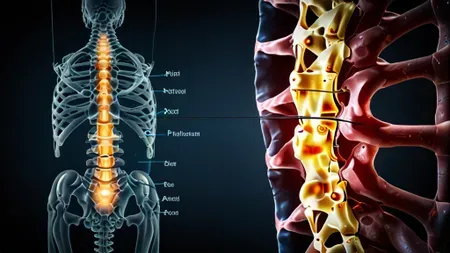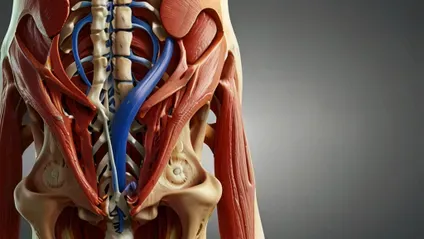Understanding The Root Causes Of Sciatica Pain
Table Of Contents
- Introduction
- How Do You Find the Root Cause of Sciatica?
- What Emotion is Connected to the Sciatic Nerve?
- How Do I Get My Sciatic Nerve to Stop Hurting?
- Which Nerve Root Causes Sciatica?
- What is the Biggest Cause of Sciatic Nerve Pain?
- What Flares Up the Sciatica Nerve?
- What Organ Can Cause Sciatic Nerve Pain?
- How to Correct Sciatica Naturally?
- Is it Better to Sit or Lay Down with Sciatica?
- What Causes Sciatica in the Buttocks?
- What Vitamin is Good for Sciatic Nerve Pain?
- What Deficiencies Cause Sciatica?
- How to Get Rid of Sciatica Pain Permanently?
- Conclusion

Sciatica is a condition that affects millions of people worldwide, characterized by pain radiating along the sciatic nerve, which runs from the lower back down through the hips and buttocks and into each leg.
Understanding the root causes of sciatica pain is crucial for effective treatment and relief. In this blog post, we will explore the various causes, symptoms, and treatment options for sciatica, aiming to provide a comprehensive guide to managing this debilitating condition.
How Do You Find The Root Cause Of Sciatica?
Finding the root cause of sciatica involves a thorough assessment by a healthcare professional. This typically includes a physical examination, a review of medical history, and imaging tests such as MRI or CT scans. These steps help identify potential issues such as herniated discs, spinal stenosis, or other spinal abnormalities that may be compressing the sciatic nerve.
What Emotion Is Connected To The Sciatic Nerve?
Interestingly, emotional stress can contribute to the manifestation and intensity of sciatica pain. Emotions such as anxiety, anger, and chronic stress can lead to muscle tension and inflammation, which may exacerbate sciatica symptoms. Addressing emotional health through stress management techniques like meditation, yoga, and therapy can be beneficial in managing sciatica pain.
How Do I Get My Sciatic Nerve To Stop Hurting?
Relieving sciatic nerve pain often involves a combination of treatments. Over-the-counter pain relievers, such as ibuprofen or acetaminophen, can help reduce inflammation and pain. Physical therapy exercises designed to strengthen the muscles supporting the spine and improve flexibility are also highly effective. Additionally, applying heat or cold packs to the affected area can provide temporary relief from pain.

For those seeking a comprehensive approach to sciatica management, the Sciatica Recovery System offers a structured program that addresses both the physical and emotional aspects of sciatica.
Which Nerve Root Causes Sciatica?

Sciatica is typically caused by irritation or compression of the sciatic nerve roots, which originate from the lower lumbar and sacral spine. Specifically, the nerve roots L4, L5, S1, S2, and S3 can be implicated in sciatica. The L5 and S1 nerve roots are most commonly affected, leading to pain that radiates down the back of the leg.
What Is The Biggest Cause Of Sciatic Nerve Pain?
The most common cause of sciatic nerve pain is a herniated disc in the lumbar spine. When a disc herniates, it can press on the nerve roots that form the sciatic nerve, causing pain, numbness, and weakness along the nerve pathway. Other common causes include spinal stenosis, degenerative disc disease, and spondylolisthesis.
What Flares Up The Sciatica Nerve?
Several factors can flare up the sciatica nerve, including prolonged sitting, poor posture, heavy lifting, and sudden movements that strain the lower back. Additionally, stress and lack of physical activity can contribute to flare-ups by increasing muscle tension and inflammation.
What Organ Can Cause Sciatic Nerve Pain?
While the sciatic nerve pain typically originates from issues in the spine, certain pelvic organs can also contribute to sciatica. For example, conditions such as piriformis syndrome, where the piriformis muscle irritates the sciatic nerve, or pelvic tumors that press on the nerve, can cause sciatica-like symptoms.
How To Correct Sciatica Naturally?
Natural methods to correct sciatica focus on lifestyle changes and holistic treatments. Regular exercise, particularly activities like yoga and swimming, can strengthen the back and improve flexibility. Stretching exercises targeting the lower back, hamstrings, and piriformis muscle can also alleviate tension on the sciatic nerve.

Additionally, maintaining a healthy weight reduces the strain on the spine.
Dietary changes, such as incorporating anti-inflammatory foods like turmeric, ginger, and omega-3 fatty acids, can also help reduce inflammation and pain. For a detailed natural approach to sciatica relief, consider Sciatica SOS, which provides a holistic program for managing sciatica pain.
Is It Better To Sit Or Lay Down With Sciatica?
Finding a comfortable position can be challenging with sciatica. Generally, lying down with a pillow under the knees to keep them slightly bent can relieve pressure on the lower back and sciatic nerve. However, prolonged bed rest is not recommended as it can lead to muscle weakening. It's better to alternate between sitting, standing, and gentle walking to keep the muscles engaged without overstraining them.
What Causes Sciatica In The Buttocks?

Sciatica in the buttocks is often caused by piriformis syndrome. This occurs when the piriformis muscle, located in the buttock region, spasms or becomes tight, compressing the sciatic nerve. Other causes include herniated discs or spinal stenosis, which can lead to pain radiating into the buttocks.
What Vitamin Is Good For Sciatic Nerve Pain?
Vitamins that support nerve health can be beneficial for sciatica pain. Vitamin B12 is particularly important as it helps maintain healthy nerve cells and can reduce nerve pain. Vitamin D, which supports bone health, and magnesium, which aids muscle relaxation, can also contribute to alleviating sciatica symptoms.
What Deficiencies Cause Sciatica?
Deficiencies in certain vitamins and minerals can exacerbate sciatica pain. A deficiency in Vitamin B12 can lead to nerve damage and increased pain. Similarly, low levels of Vitamin D can weaken bones and contribute to spinal issues that may compress the sciatic nerve. Ensuring a balanced diet rich in these nutrients is crucial for managing sciatica.
How To Get Rid Of Sciatica Pain Permanently?
Getting rid of sciatica pain permanently often requires a multifaceted approach. Addressing the underlying cause, whether it's a herniated disc or spinal stenosis, is essential. This may involve medical treatments such as epidural steroid injections or, in severe cases, surgery.
However, combining medical treatments with lifestyle changes is key to long-term relief. Regular exercise, proper posture, and weight management can prevent recurrences. Additionally, incorporating stress management techniques and ensuring adequate intake of essential vitamins and minerals can support overall spinal health.
Conclusion
Understanding the root causes of sciatica pain is the first step towards effective treatment and long-term relief. By identifying the underlying issues, addressing both physical and emotional factors, and incorporating natural and medical treatments, individuals can manage and potentially eliminate sciatica pain. Remember, a comprehensive approach that includes lifestyle changes, proper nutrition, and professional medical advice is crucial for overcoming this condition.
For those looking for structured programs to aid in their recovery, consider exploring Sciatica Recovery System and Sciatica SOS. These resources offer valuable guidance and support for managing and relieving sciatica pain effectively.
See How Long Does It Take for a Herniated Disc to Heal? A Comprehensive Guide
People Also Asked
Q1: How long does sciatica pain last?
A1: Sciatica pain can last from a few days to several weeks, depending on the underlying cause and treatment.
Q2: Can sciatica heal on its own?
A2: In many cases, sciatica can improve with self-care measures, but persistent pain may require medical treatment.
Q3: What are the symptoms of sciatica?
A3: Symptoms include pain radiating from the lower back to the leg, numbness, tingling, and muscle weakness.
Q4: Can stress cause sciatica?
A4: Stress can contribute to muscle tension and exacerbate sciatica symptoms.
Q5: What are the best exercises for sciatica?
A5: Stretching exercises targeting the lower back, hamstrings, and piriformis muscle are effective for sciatica.
Q6: Is walking good for sciatica?
A6: Walking can help reduce sciatic pain by promoting blood flow and reducing inflammation.
Q7: Can poor posture cause sciatica?
A7: Poor posture can contribute to spinal issues that lead to sciatica.
Q8: Are there any foods that help with sciatica?
A8: Anti-inflammatory foods like turmeric, ginger, and omega-3 fatty acids can help reduce sciatica pain.
Q9: How does a doctor diagnose sciatica?
A9: A doctor diagnoses sciatica through physical examination, medical history review, and imaging tests like MRI or CT scans.
Q10: When should I see a doctor for sciatica? A10: If you experience severe pain, weakness, or loss of bladder/bowel control, you should see a doctor immediately.

